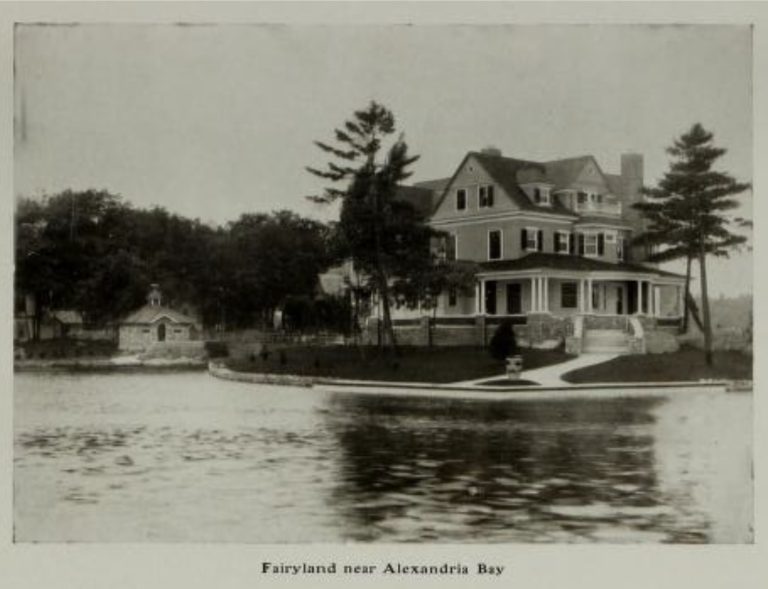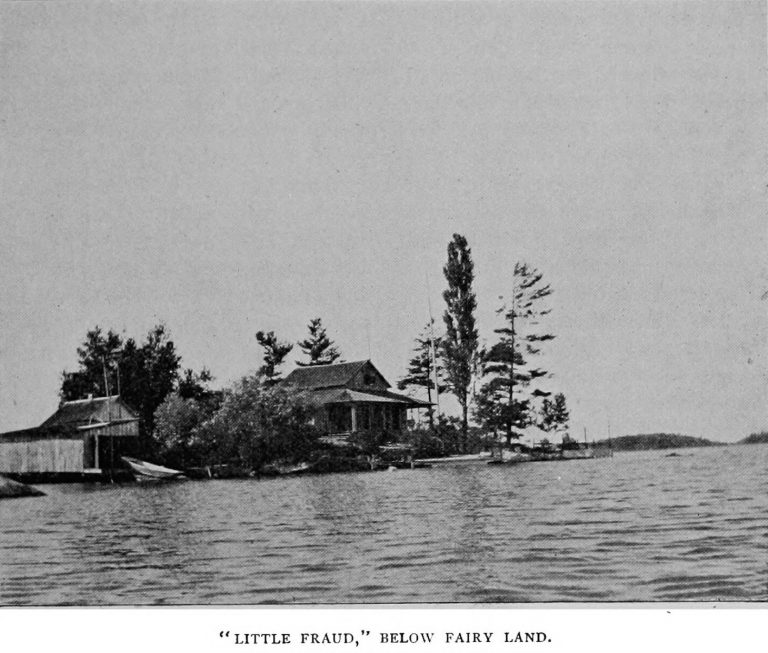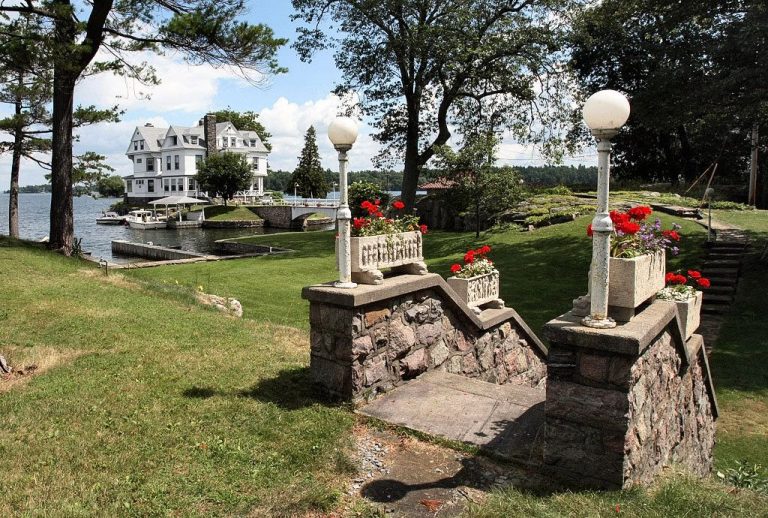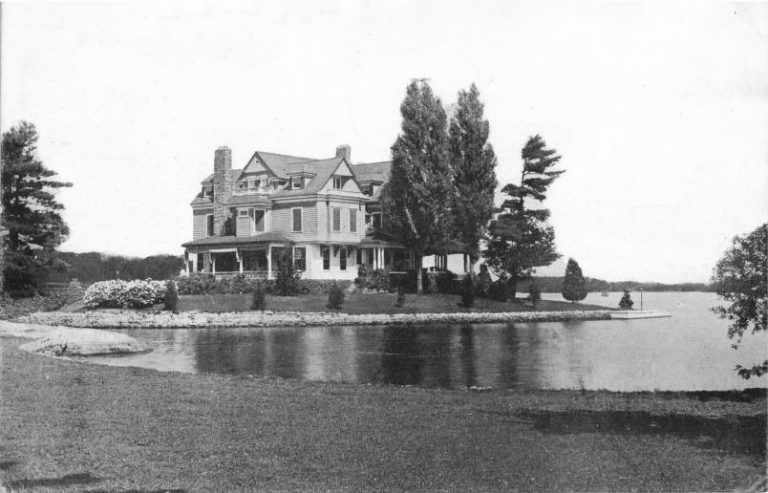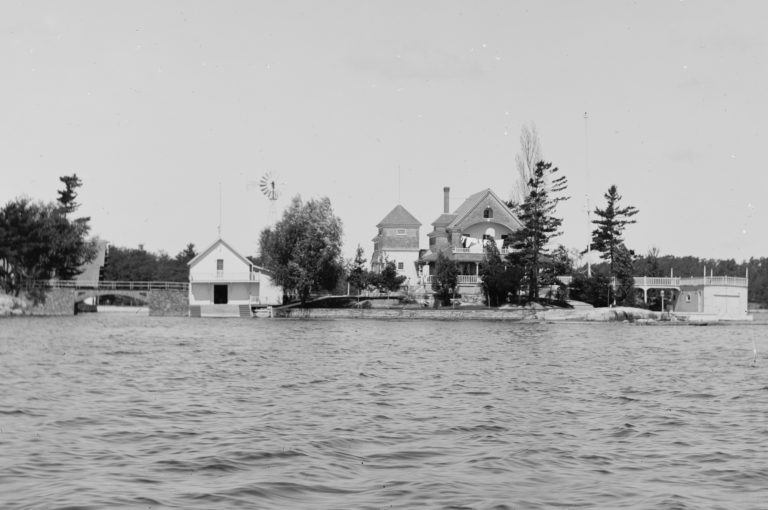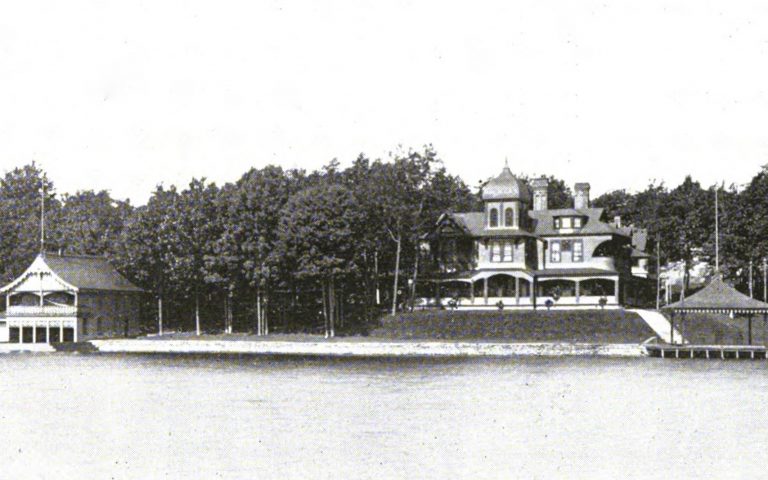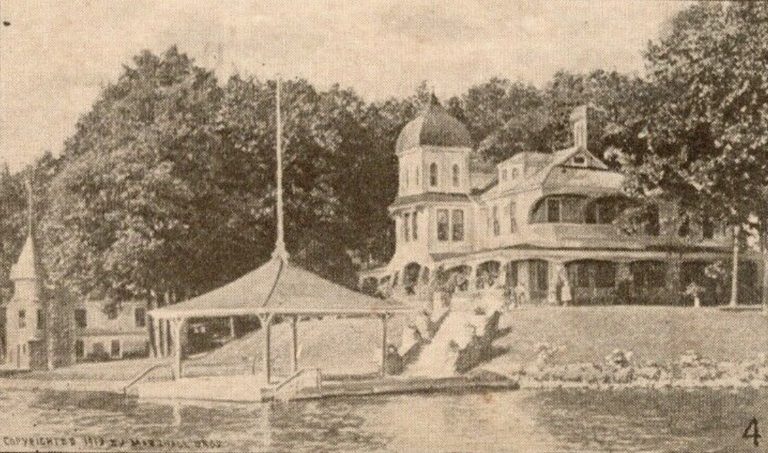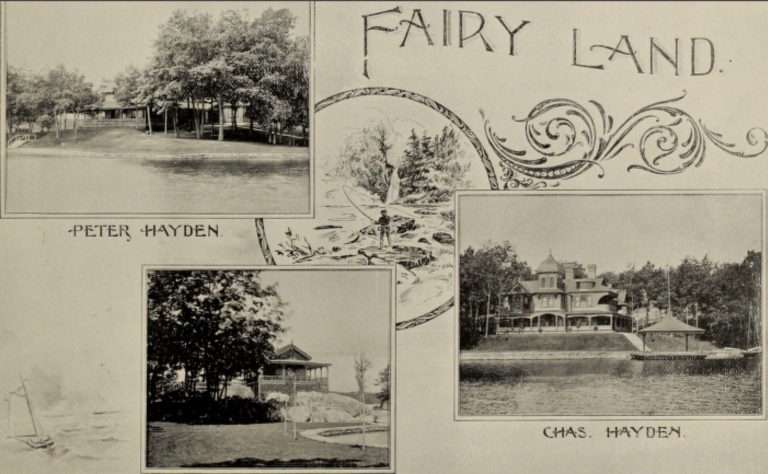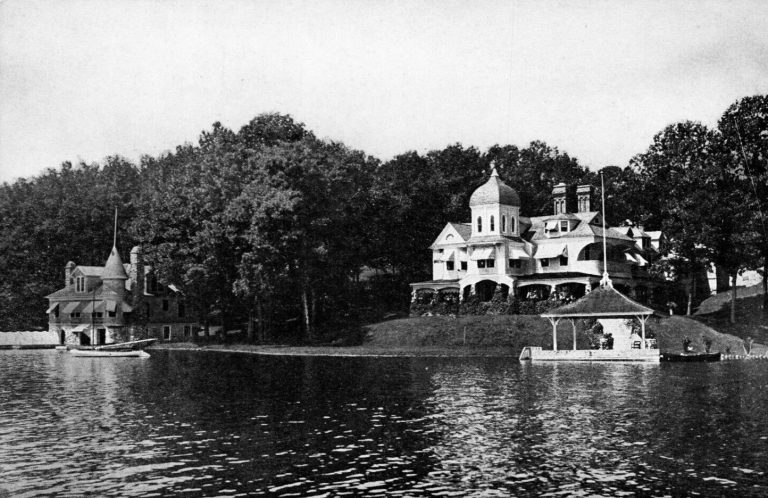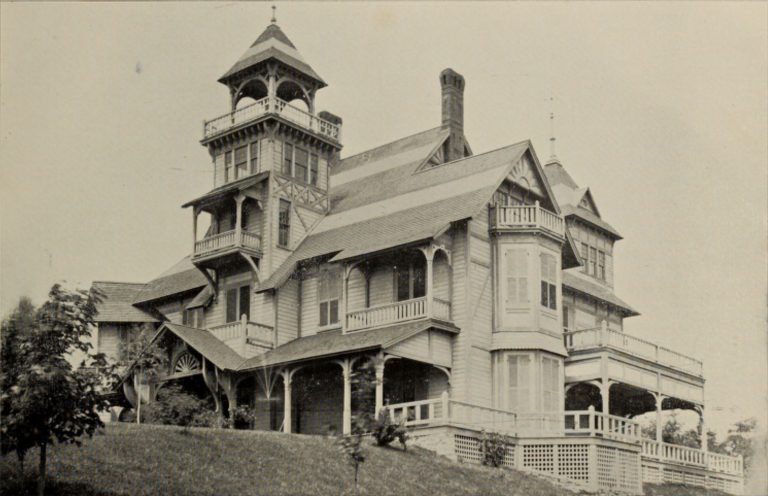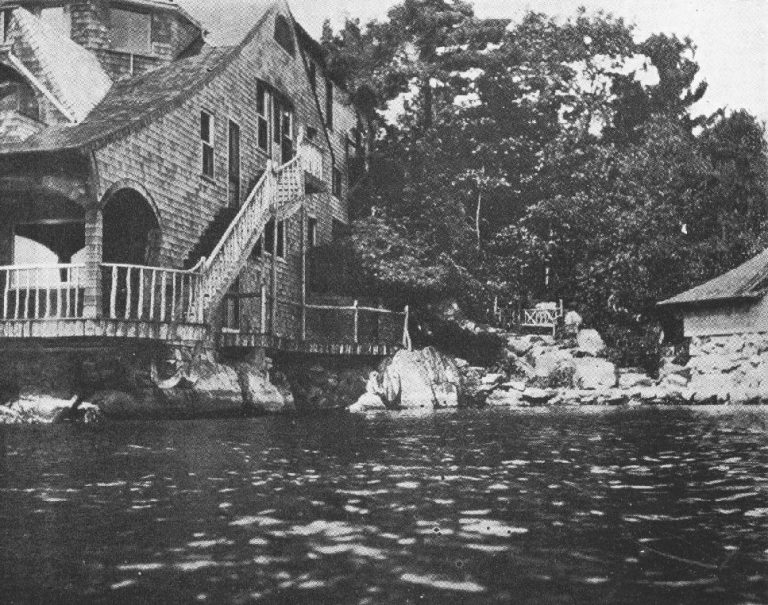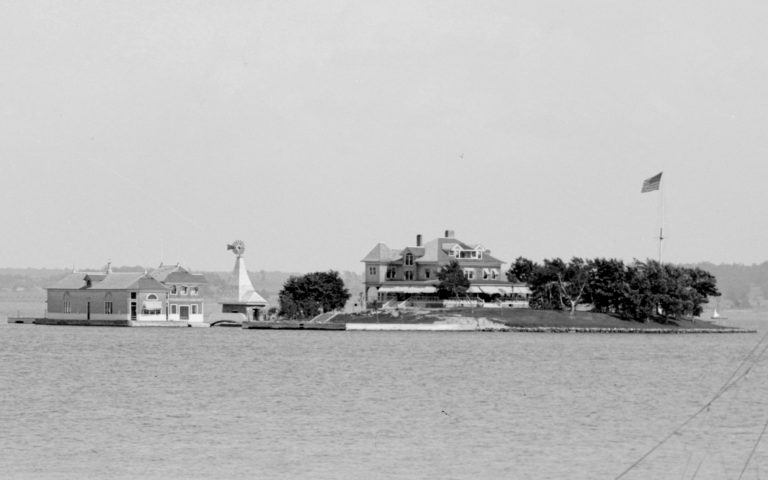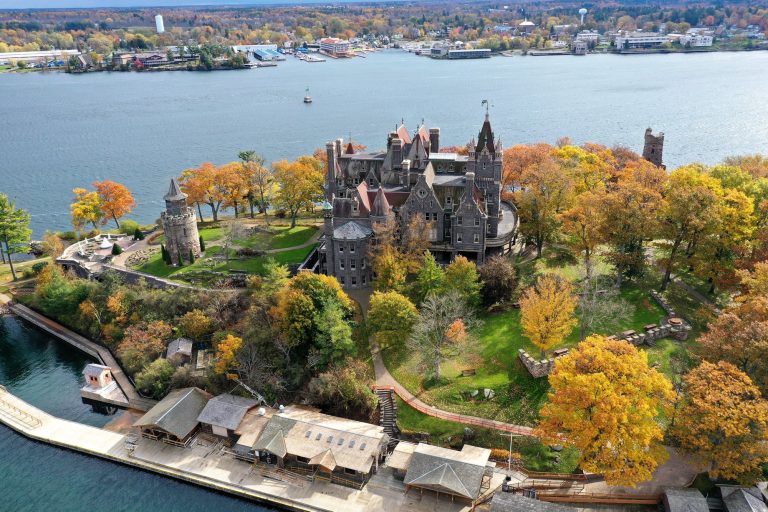Fairyland Island, Home To The Hayden Family Summer Homes
Fairyland is the curious name given, and rather confusingly so, to an island, a summer home, and a summer home on another island that was once referred to as Little Fraud Island. Throw in a few generations of the Hayden family with three different summer homes on the island(s), all often referred to in the general terms of “Fairyland,” and one might understand the desire to take up cryptology.
That being said, this will discuss, to some degree, the summer homes as they pertain (mostly) to the Hayden history. As more information is gathered, it is hopeful that each will have their own respective piece as they all have their own distinctive locations and histories after the Hayden dynasties.

Patriarch Peter Hayden, an industrialist who uprooted his family from Auburn, N.Y., to Columbus, Ohio, made a fortune in banks, coke & coal, steel and saddlery, amongst other ventures. Haydenville, a small Ohio town, was founded in 1852, named after him and was the last entirely owned company town in Ohio. If you lived in Haydenville and lost your job, you lost your home, too. That being said, Peter Hayden was a philanthropist and a well-regarded gentleman.
In 1873, the remaining member of the family, in particular Colonel William Buck Hayden and Charles Halleck Hayden, would set adrift in the Thousand Islands searching for one to call their own – one that eventually would bear the name “Fairyland.” As originally reported in a Harper’s New Monthly Magazine in the 1880s and later retold in a more recent piece for Time Magazine online—
Fairyland Island got its name from the Ohio family who bought the land in 1873 and brought their invalid daughter hoping for a cure. Peter Hayden was a rich horse collar manufacturer from Columbus, Ohio, who bought the island as a summer home for his wife and children. The family eventually built three large residences on the island including circa-1904 Estrellita, which means “little star” in Spanish.
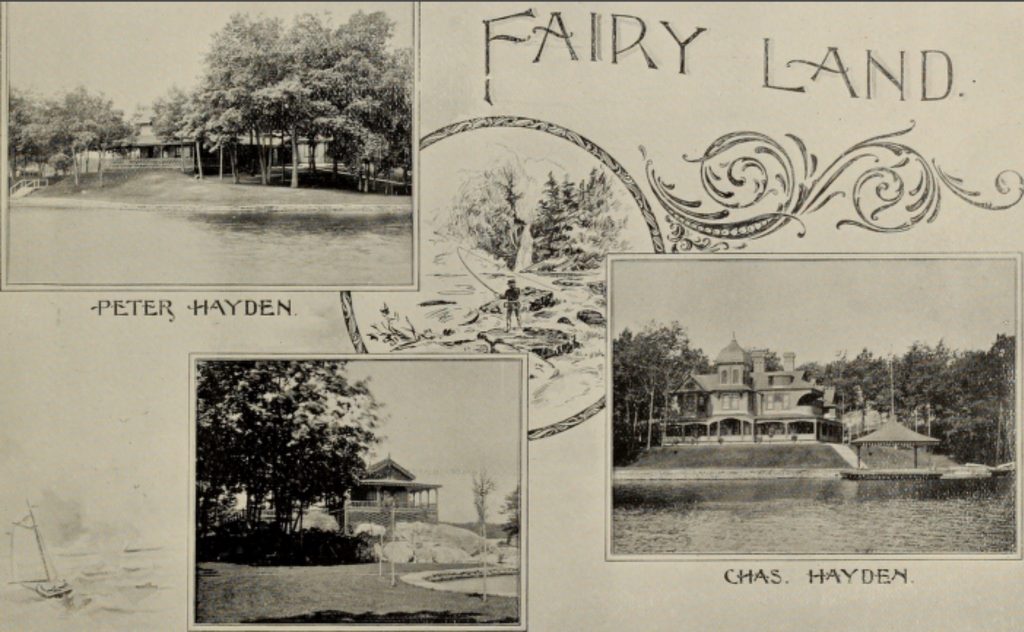
If true, and assuming it was Peter’s child, the daughter most likely was Adelaide Hayden, born in 1844 and deceased in 1877. Peter and his wife, Alice Booth Hayden, had seven children, but it appears a tragedy occurred for three of them with unknown birthdates, Josiah, Herbert, and Lillian, all passed away in 1857. The only other daughter was Harriet, who passed away at the age of only 3 or 5 months in 1850.
It is also possible, and discussed as a theory, that the name Fairyland came from the term used to describe the Thousand Islands on a summer night when the residents lit their islands and homes up with colorful lights. The Watertown Daily Times referenced the term numerous times in the 1880s and 1890s with regard to the illuminating spectacle the islands provided.
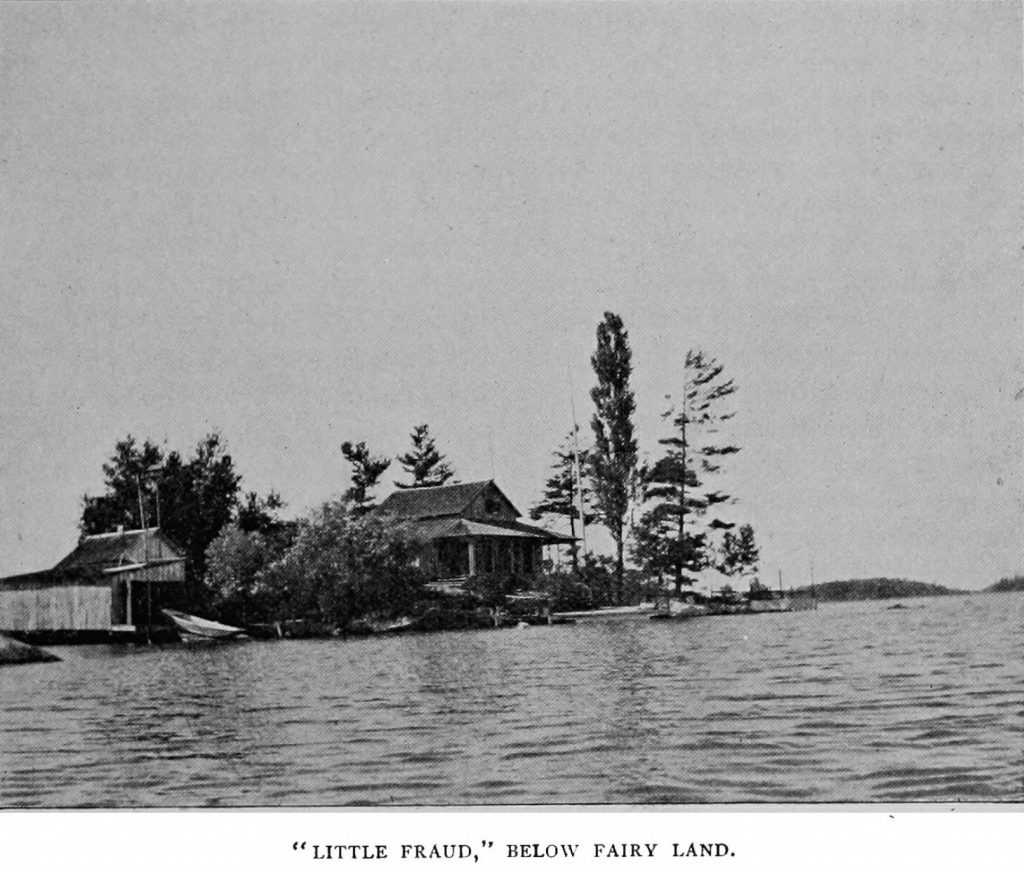
In one particular instance regarding “lights,” Colonel William and Mitilda Hayden’s daughter, Jane Duff Hayden Quintard, was besieged by tragedy, having lost a daughter, Helen, less than a month old in 1897. Her husband, William Isleworth Quintard, would then pass away two years later in 1899. Jane herself would pass away in 1904 at the age of 35, leaving her parents to grieve. Years later, the Watertown Daily Times would report on July 11, 1916—
Colonel W. B. Hayden, of New York and Columbus, Ohio, whose summer home is at Fairyland, Alexandria Bay, is having an electric cross designed as a memorial to his daughter, the late Miss Jane Hayden. The cross will be erected at Colonel Hayden’s summer home, Fairyland, Alexandria Bay, New York.
When erected on the tower, between the two homes of Colonel W. B. Hayden and his brother, C. H. Hayden, it will be 200 feet above the water. There are 25 lights in the cross, which measures eighteen by ten feet. The cross is the largest at the Thousand Islands, and when completed will be most illuminating and very beautiful. It will be lighted up on Sunday nights, as is the custom with the islanders, many of whom have large crosses for Sunday night illumination.
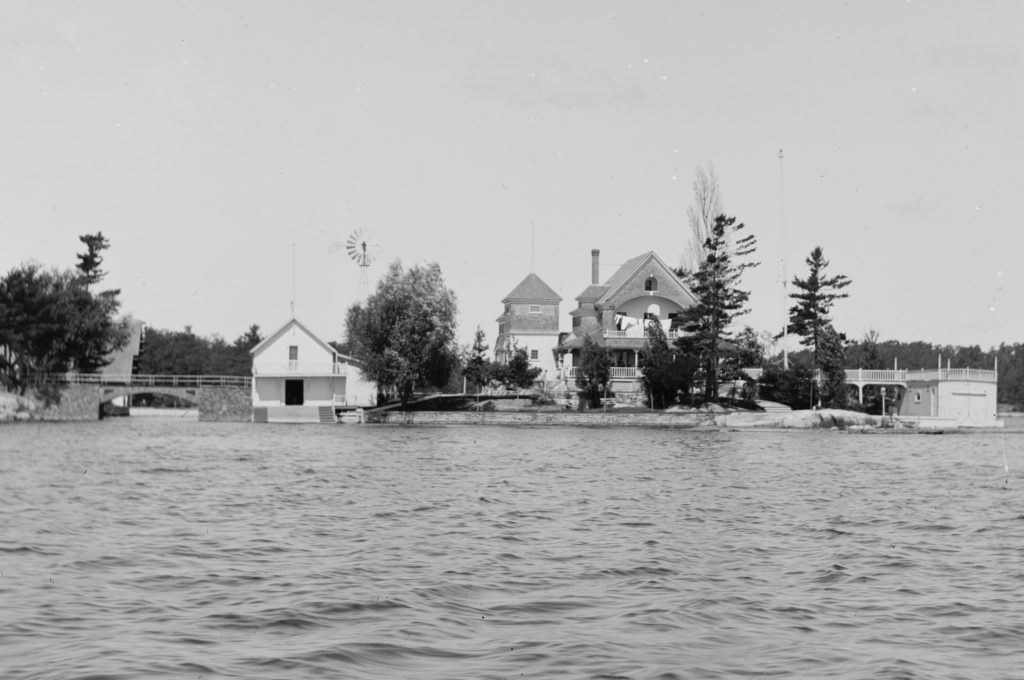
Ironically, the news of the memorial for their daughter would come the same day as William’s own death after a short illness at the age of 76. Colonel William had, in earlier years, amassed a fortune worth $20,000,000 from various businesses, including steel foundries in Columbus, Ohio, and as a principal stockholder of the Hayden National Bank of Columbus, amongst other ventures.
With all this said, the 20+ room Estrellita is not on the same land as Fairyland. Older references to it were “Little Fraud Island,” which was perplexing at first due to a photograph of the prior structure apparently on the island. Realizing that Estrellita wasn’t constructed until 1904 and noting that most photographs from the Detroit Publishing Co. were completed before 1901 leads one to conclude it indeed was the prior structure there.
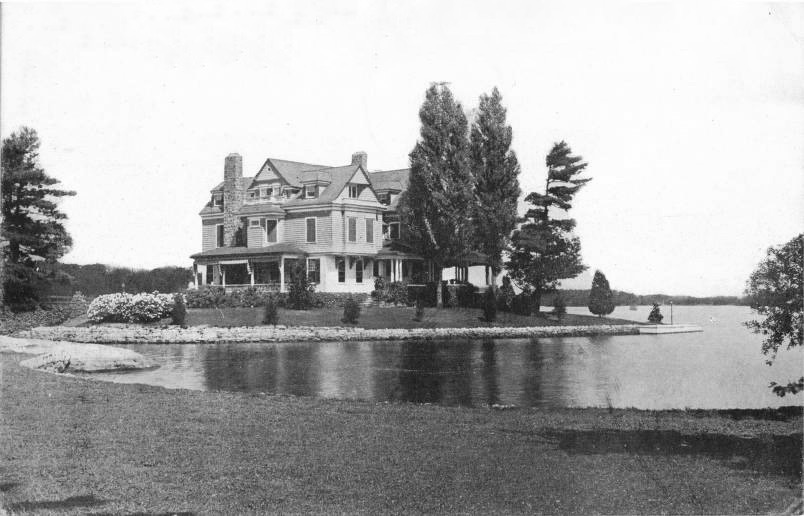
Before Estrellita, the Little Fraud Island had a single-story structure on it, which was referenced in a Watertown Daily Times article dated May 17, 1881–
Contractor Pope informs me that the Haydens of Columbus, O., who already have many thousands of dollars invested in substantial and elegant cottages, boat houses, etc., will have many other improvements upon their island ere long.
Last fall the elder Peter Hayden had a fine house built. William Hayden’s house is to be raised one story. Their water tanks are being enlarged, and other work is constantly being done by his forty-seven mechanics, assisted by one steamer, several scows and sailboats around the bay.
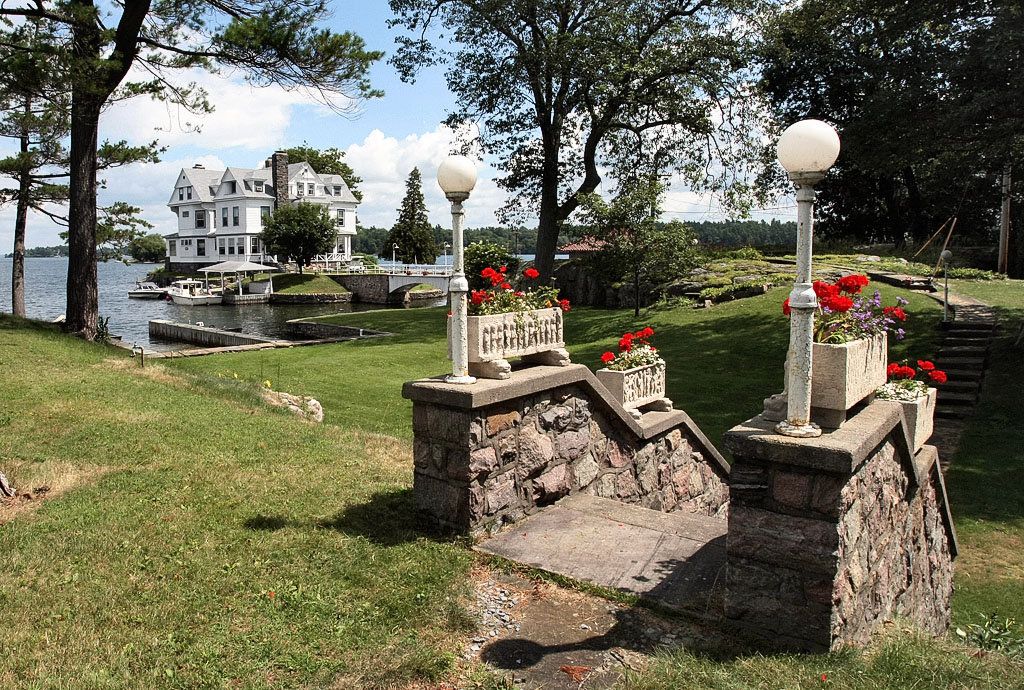
Peter Hayden’s summer home was a modest one, as was apparently William’s, at least initially. When he added onto it, it began to look a bit more palatial as evident from the before and after photos. Nothing could be found regarding the razing of the previous two story structure, if it indeed was as evident from the Wilbur cottage on Sport Island being built around the nucleus of the original structure.
Nevertheless, Estrellita would become one of the grandest summer homes with 20+ rooms, but it was William’s brother Charles who constructed what was considered one of the more palatial, and pretentious, summer homes on the St. Lawrence.
Generally known as the “Fairyland” of Fairyland Island, was reported in the Watertown Daily Times June 18, 1888 as having several men working on his cottage for nearly a year, “and the beautiful hardwood finish of the cottage is as smooth as glass.” Indeed, the general appearance of its three-story tower with a sloping dome curves to a point made it look like an exotic palace out of, well, a fairytale. Adding what is known today as Broomstick Castle, a fairly large boathouse with a castle-like turret, only added to the island’s splendor.
The video below shows Broomstick Castle when it was for sale in recent years (it’s been sold, but the video is still posted on YouTube.)
Charles Hayden passed away in 1920 at the age of 83. Both William and he would pass away at their summer homes, with their funerals taking place there. His son, Charles L. Hayden, would carry on the generational legacy on Fairyland Island and, like his grandfather, father, and uncle before him, was one of the most prominent individuals in the Thousand Islands community. He passed away in 1940 at the age of 66 while staying at his 5-room apartment at Hotel Woodruff in Watertown, having been too ill to travel and spend the winter in Phoenix, AZ, as he typically did.
After graduating from Harvard around 1894, Charles and his father’s family lived at the Waldorf-Astoria in New York City, no doubt acquaintances of George C. Boldt, their Thousand Island neighbor at Heart Island and proprietor of the hotel. Charles would serve many years as the secretary of the Thousand Islands Yacht Club, of which his father was one of the founders.
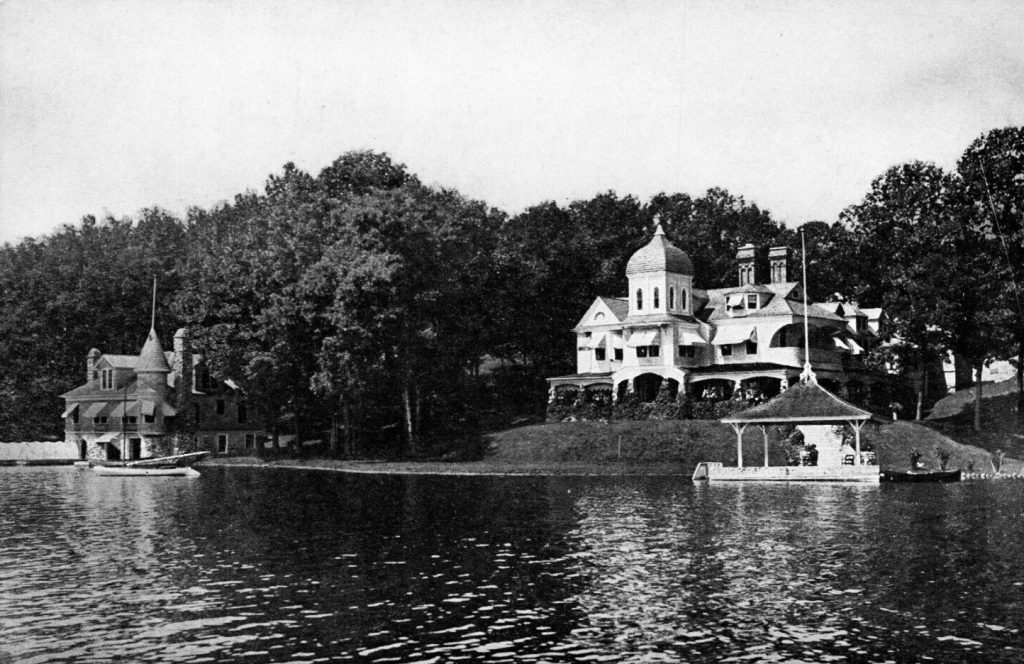
Fairyland, the summer residence, was destroyed in a fire on May 8, 1942. Then, it was owned by W. A. Sullivan of Hoboken, N.J., who purchased it from the Charles L. Hayden estate in the spring. Some workers had begun decorating the building and started a fire in the fireplace but extinguished it with a pale of water before leaving around 11 a.m. Shortly afterward, a fire was noticed by Albert Massey, caretaker on neighboring Steamboat Island.
By the time firemen arrived, the building was destroyed having completely burned to the ground, but the boat house and servants’ cottage which were threatened by a north wind were saved. The Watertown Daily Times noted “Fairyland Island is one of the most palatial summer estates of the Thousand Islands and has been on of the show places of the summer resort for years.”
